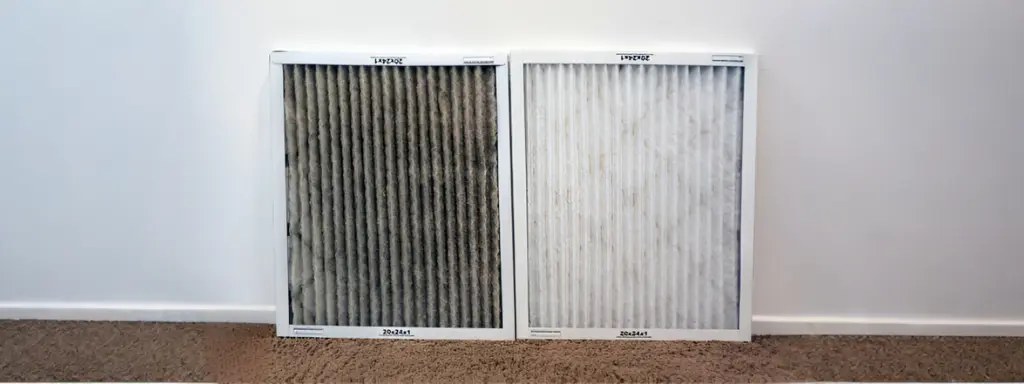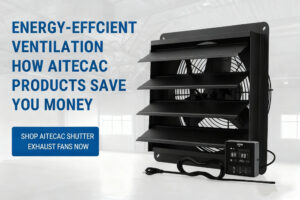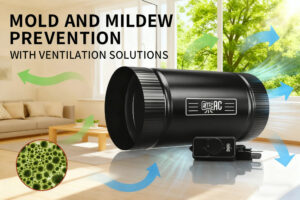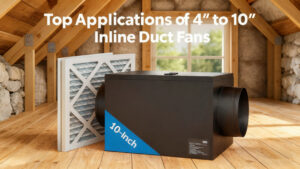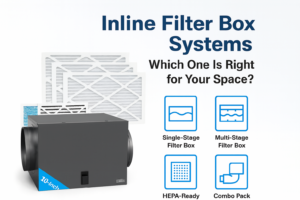Maintaining clean air inside buildings supports both health outcomes and comfort. Regular air filter replacement is vital to sustain high air quality levels. Individuals seeking to determine the optimal frequency for replacing their air filters will find the answer in this guide. This guide provides comprehensive information on air filter change frequency, starting with fundamental knowledge and followed by expert recommendations.
Why Changing Your Air Filter Matters
The air filter you use traps pollutants, including dust and pollen, while stopping mould spores and other harmful particles. The filtering material gradually fills up and stops working properly. Your HVAC system requires extra effort when operating with a clogged filter, resulting in higher energy expenses and reduced equipment lifespan. Your heating and cooling systems operate more efficiently when you use clean filters, which simultaneously improves air quality and reduces your expenses.
Maintaining your Air Filter Box alongside Filters remains essential for all models of air filtering systems. Failure to follow the filter schedule can result in serious consequences, including equipment breakdowns and health risks.
How Often Change Air Filter: General Recommendations
According to general recommendations, residential HVAC systems require their air filters to be changed every 30 to 90 days. Several factors determine the exact duration until filter replacement, and the exact timing depends on these factors.
- Basic fibreglass filter owners should change their filters once a month, but high-efficiency filters offer longer-lasting performance.
- Properties with a heavy pet presence and smokers require more frequent filter replacements, as air quality remains poor.
- The daily operation of your HVAC system leads to faster filter clogging.
- The guidelines and specifications in the manufacturer’s instructions for your filter and air system must always be followed.
3 Primary Elements Determine How Often You Should Replace Your Filter
The following factors determine the necessary frequency of air filter replacement:
Pets in the Home
A filter becomes blocked up rapidly when pet hair and dander are present. According to general standards, you should change the filter once every sixty days when you have one pet at home. An air filter in homes with multiple pets must be replaced after 30 to 45 days.
Allergies and Respiratory Issues
Individuals with allergies and asthma require special attention to indoor air quality in their homes. High-efficiency filters accompanied by regular replacements every 30 to 45 days deliver better results for symptom management.
Type of Air Filter Used
Not all filters are the same. Standard fibreglass Filters function at a low cost yet provide minimal efficiency and need regular replacement. An Air Filter Box constructed with strength and containing premium-grade filters will provide longer-lasting protection for indoor air quality.
Location of Your Home
Dust accumulation occurs at a faster rate in residences located in urban environments or near construction activities. Individuals residing in areas with high wildfire activity and significant pollen counts should replace their air filters more frequently to maintain optimal indoor air quality.
System Usage
When HVAC systems operate at full capacity in the summer and winter, they exhaust filters more rapidly. The operating period of your HVAC system during mild seasons extends the lifespan of the filter.
Signs You Need to Change Your Air Filter
The air filter indicates when it needs replacement, even if you cannot remember the recommended replacement schedule.
Visible Dirt or Discolouration
Your air filter needs replacement because you can easily see the built-up dirt and any discolourations. When clogged, the filter turns brown, grey, or dusty, so it stops cleaning the air properly. Air quality stays undamaged when you replace your filter right after signs appear.
Increased Energy Bills
Your heating and cooling system works excessively when your household energy bills experience an unexpected spike. The system must expend extra energy to force air through when the filter becomes clogged, resulting in increased electricity consumption.
Dust Buildup
Frequent dusting of furniture, along with other regularly cleaned surfaces, indicates an inefficient air filter. A filter in perfect condition significantly reduces dust production in your home environment.
Allergy Flare-Ups
Dirty air filters can compromise indoor air quality, potentially exacerbating respiratory conditions and symptoms of allergies. Replacement of the filter becomes necessary when allergy symptoms affect you or your household members, or when you experience sneezing and coughing at an abnormal frequency.
System Issues
Your HVAC system may experience problems maintaining the desired temperature, produce weak airflow, and make odd noises because a blocked filter is the primary issue. Filter replacement usually resolves functional problems in HVAC systems.
How to choose the right filter
Choosing the right air filters enables your HVAC system to operate at its maximum performance and enhances indoor air quality.
MERV Rating
Filters determine their dust-trapping abilities through MERV ratings. Air filters with higher MERV ratings, such as level 13, become more efficient at capturing airborne pollutants, including pollen, mould spores, and dust mites. Very high MERV filters occasionally block airflow in heating, ventilation, and air conditioning systems. People should choose high-efficiency filters because they effectively trap contaminants and preserve the ventilation of their HVAC system.
Filter Size
Refer to your HVAC system’s chart to select the correct filter size for your system. When filters do not match the exact dimensions of the HVAC system, the system experiences reduced efficiency and may be subject to potential harm.
Filter Type
Pay attention to the proper filter choice. A basic panel filter suits the needs of standard air filtration systems. The Air Filter Box setup yields improved air cleaning results and enhanced airflow management, particularly in larger or more contaminated areas.
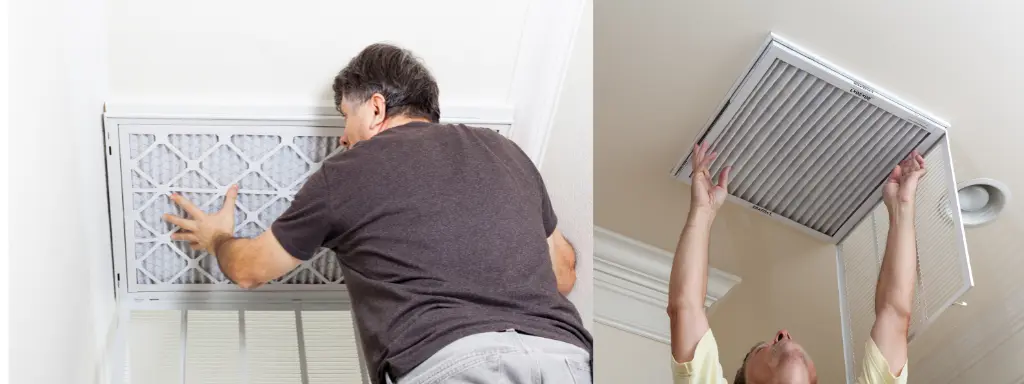
How to Replace an Air Filter
Replacing an air filter does not require expert help, as the process remains uncomplicated.
Turn Off Your HVAC System
Turn off your HVAC system at the beginning of your work. Filter replacement tasks must be performed while the system is turned off to prevent the intake of dirty air.
Locate the Filter
Find the air filter. It is either located inside the return air vent section or at the site of the HVAC system’s air handler unit.
Remove the Old Filter
First, the existing filter unit must be removed from its placement position to start the filter replacement process. Inspect the filter for dust accumulation, as this indicates when you should follow regular filter update protocols.
Check the Size
The new filter dimensions must be determined by comparing them to those printed on the old filter frame before the filter is placed in position. A suitable filter replacement should have the same dimensions as the current ones.
Insert the New Filter
Place the new filter properly into its correct slot, ensuring it is oriented according to the standards. The filter frame features marked arrows that indicate the direction of airflow.
Turn Your System Back On
After powering your HVAC system, the filter installation procedure concludes, thus enabling better air quality within your home.
Setting up phone or calendar alerts allows you to stay on track with maintenance by reminding you of filter replacement schedules.
Benefits of Regular Air Filter Changes
When you perform scheduled air filter changes, you benefit your health substantially while lowering your budget costs.
Better Air Quality
Clean air filters effectively capture a greater amount of airborne matter, improving household air quality for everyone inside.
Improved System Efficiency
A clean filter enhances the efficiency of HVAC system operation, reduces energy consumption, and enables better system performance. The system distributes heat evenly throughout your house through its operating mechanism.
Energy Savings
Utility costs decrease each month because energy usage decreases. Changing filters regularly is an optimal method to achieve significant savings throughout prolonged periods.
Longer Equipment Life
System parts, including coils and motors, remain dust-free since clean filters keep the equipment operational. Routine filter changes result in lower operating costs for HVAC equipment and simultaneously extend its lifespan.
When to Call a Professional
The simple operation of filter replacement works for any system; however, the Air Filter Box requires professional maintenance due to its complex structure. Schedule an HVAC inspection immediately after you notice strange sounds accompanied by poor airflow or extreme temperature changes that persist even after replacing the air filter.
Final Thoughts
Maintaining a home and business environment requires knowledge of the appropriate schedule for changing air filters. Regular maintenance activities ensure that HVAC systems remain secure from damage and that residents or employees receive clean, filtered air.
Pet factors, system usage habits, air quality, and allergy conditions directly influence the lifetime of your air filters. Combining high-efficiency filters with the air filter box creates the most effective filtration system for your equipment purchase.
This quick method enhances both your building’s air quality and the operating efficiency of your HVAC system.

